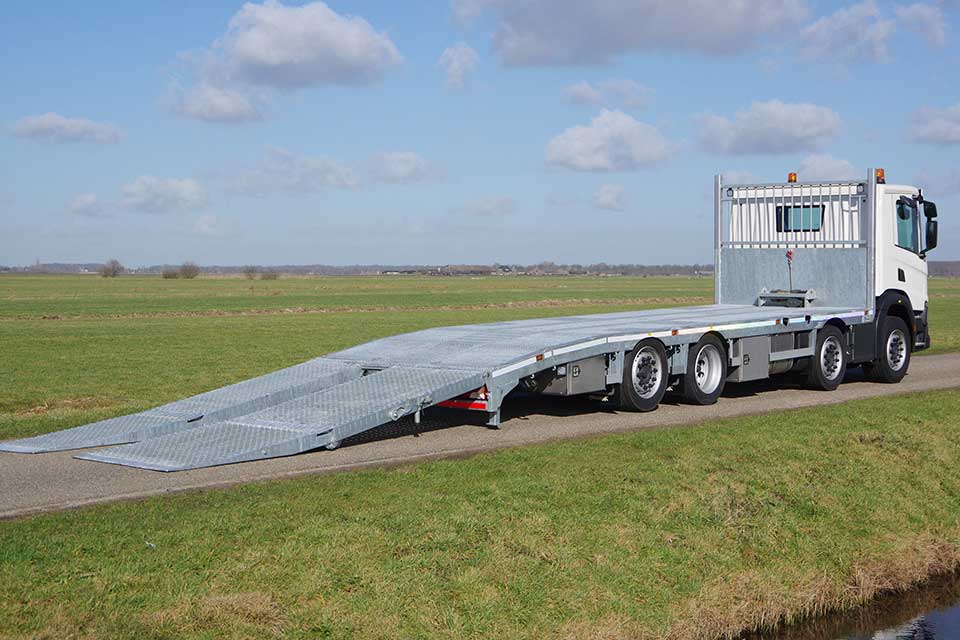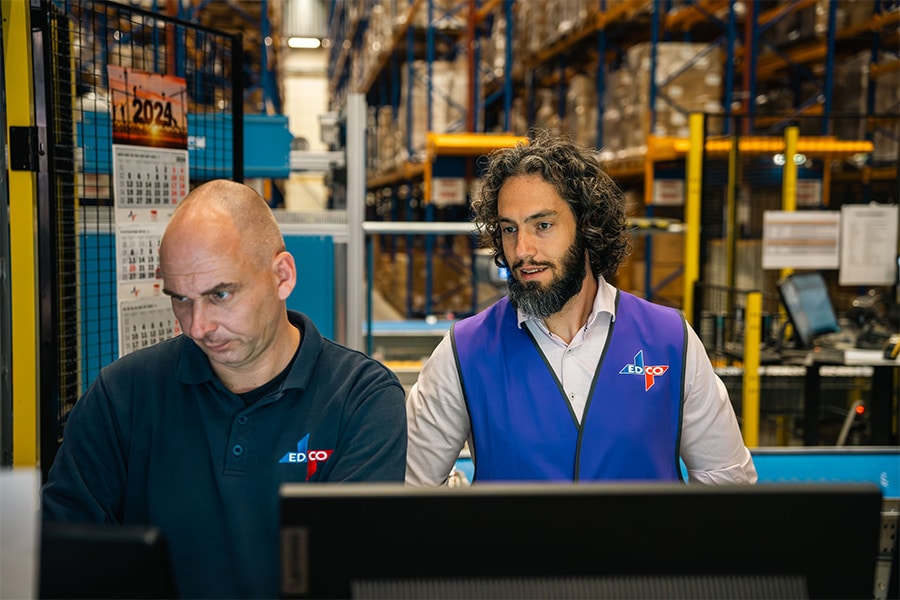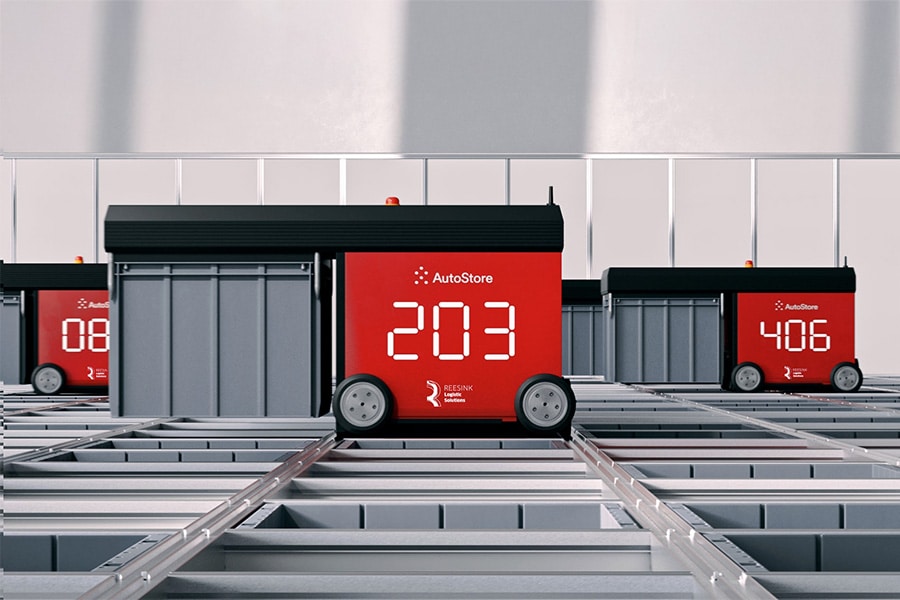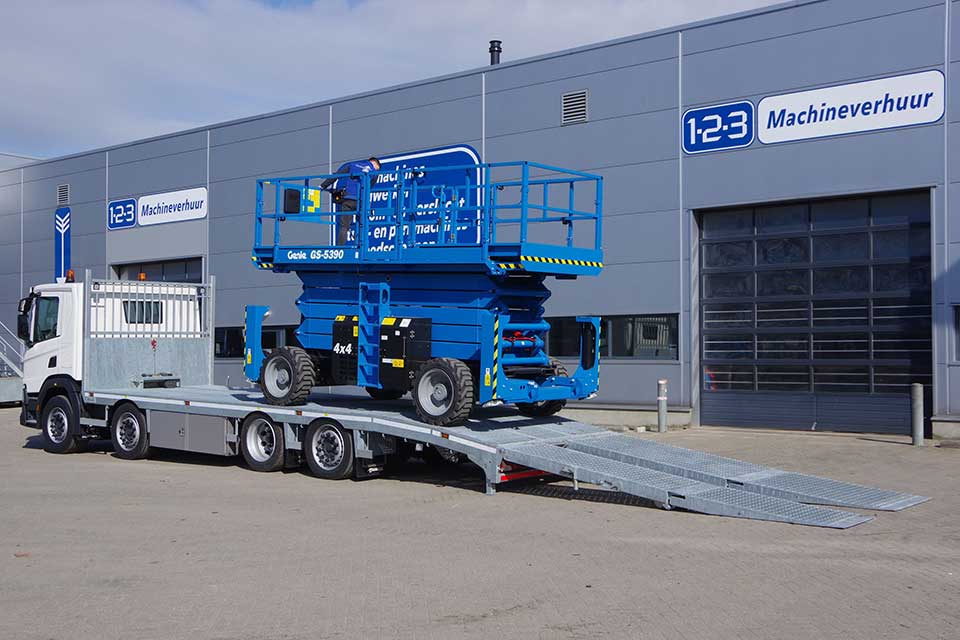
Extra low Scania ramp truck from Veldhuizen
As a result, the load floor height is only 98 centimeters, while the payload of the 4-axle is 24 tons. This was made possible by the development of a variable-height chassis beam.
To get a high load capacity on the front axle in combination with the lowest possible load floor, lower rear tires were mounted by Veldhuizen. On the drive axle, 295/55R22.5 tires were fitted and on the 2e &4e axle 375/45R22.5. The front tires are of size 385/55R22.5. A consequence of fitting these lower rear tires is that the chassis tilts backward. Simply reducing the suspension travel of the front axles would suffice, but this has adverse consequences for comfort. To combine full suspension travel and a low loading floor, Veldhuizen Wagenbouw developed a chassis beam with variable height.
Stable structure
Along the original Scania chassis a steel plate was mounted from Domex steel. This plate protrudes higher at the rear than at the front, making the chassis flat again. At the front, sleepers of 60 mm high were used and at the axle frame, sleepers of 100 mm were applied. This creates a stable structure with continuous sleepers and a loading floor height of 98 cm.
Full air suspension
The rear of the loading floor is double-curved chamfered to 75 cm, while the height on tapers to just 55 cm. This allows an ideal ramp angle of 8 degrees for many machines, thanks in part to the Scania's full air suspension.
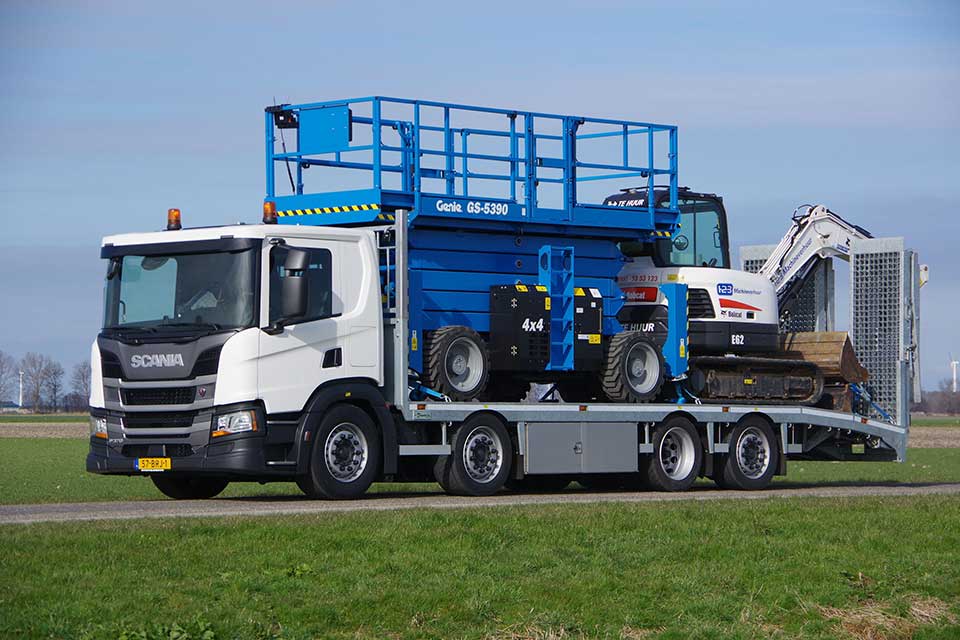
Oprjik flap with piercing
In some cases, the boom of a machine must extend backwards. It was therefore decided to make the left drive-up ramp 50 cm narrower. Machines up to 1.2 m wide can be loaded over the single driveway ramp; wider machines over both ramps
Agile and compact
The loading floor is 850 cm long by a width of 255 cm. Combined with the high payload of nearly tons, this trailer is the solution for transporting common machines. The advantage of a box truck over a tractor-trailer is that it is a much more compact vehicle. With the maneuverable Scania, even tight city centers are easily accessible, and the box truck is easier to park during work than a much longer tractor-trailer combination.
